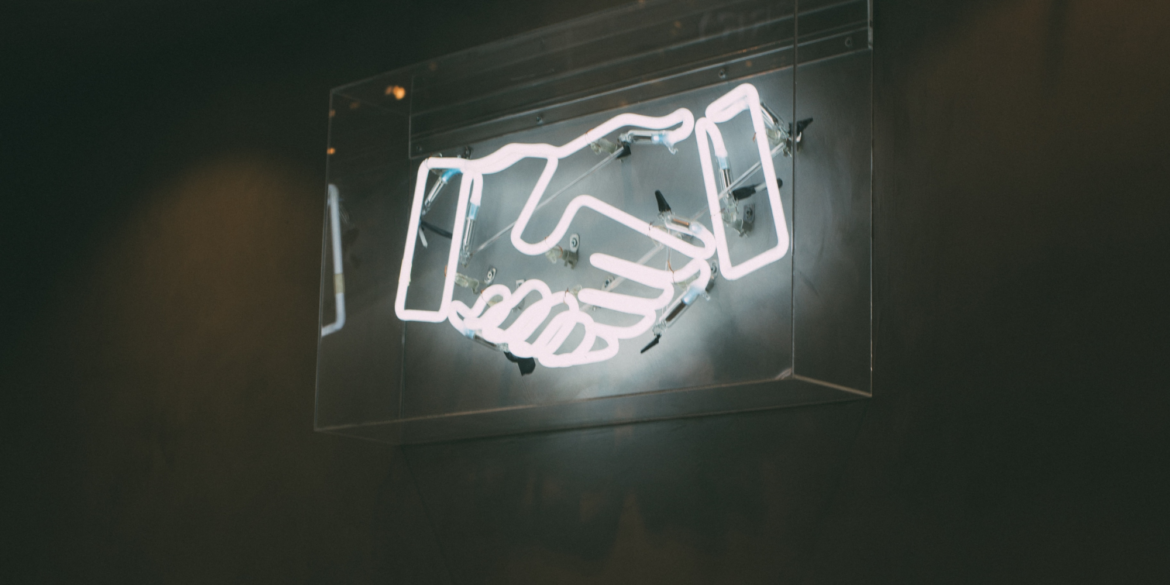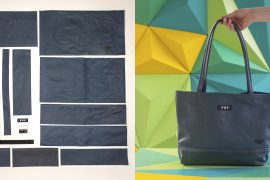Collaborations—we see them every day. They’re a testimony to the idea that teamwork really can make the dream work; that partnering up with another person or group can yield rewards far greater than one could ever achieve on their own. This is true for brands both big and small: teaming up with another organization is a surefire way to get people talking.
There’s something about cross-brand collaboration that captures audience attention, whether it’s an obvious PR scheme drummed up for the sake of virality or the sort of genius combination that leaves you wishing someone thought of it sooner (we’re looking at you, Doritos Locos Tacos). So of course, when collaboration between huge brands is a guaranteed trend, it’s bound to be beneficial on a local level as well.
To prove our theory and get an up-close look at just how powerful collaboration can be, we spoke to three local apparel-oriented brands about their experiences working with brands outside of the creative space.
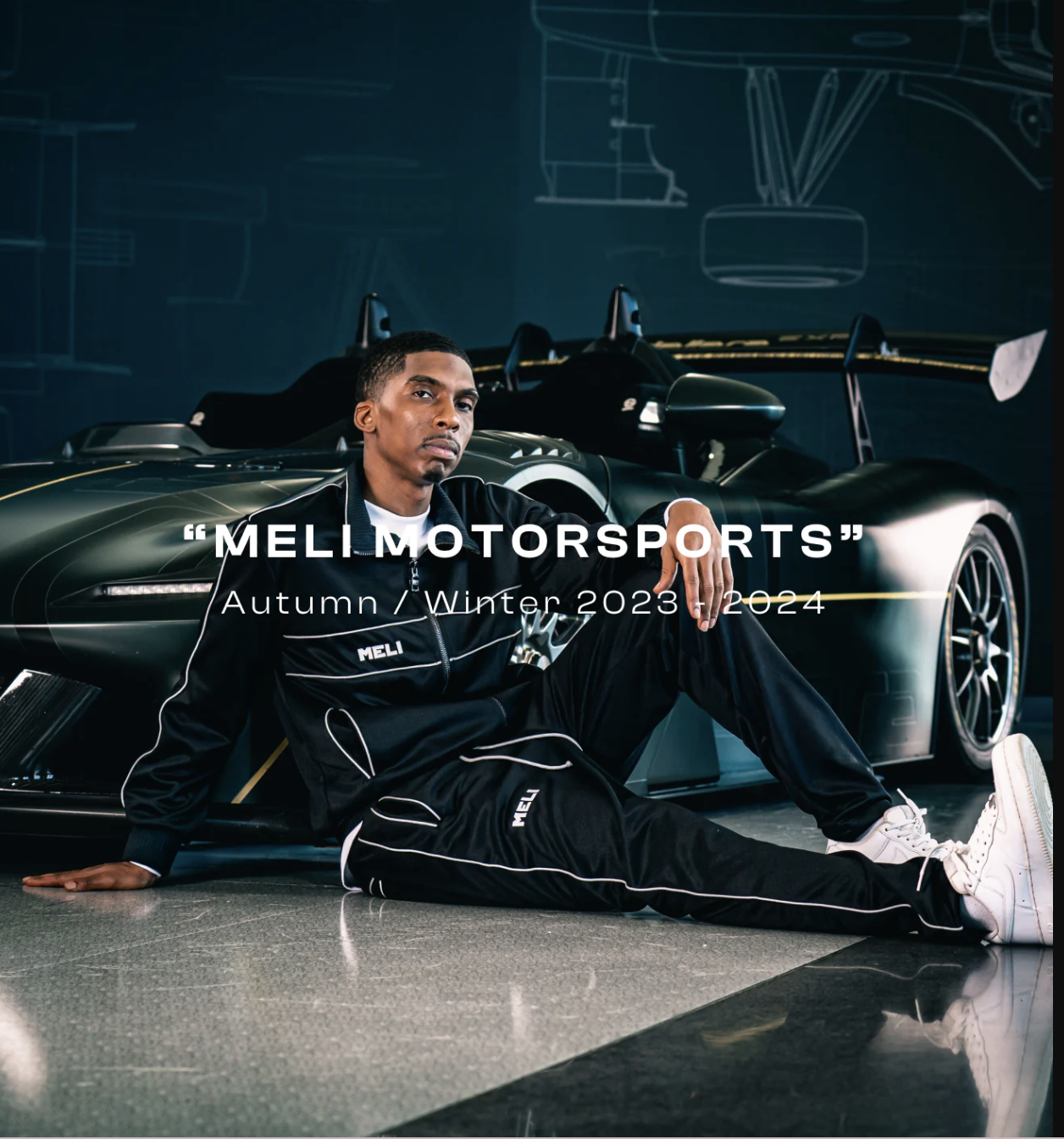
Monty Matuca, founder of the sophisticated streetwear brand MELI, spoke to the power of collaboration on a local level. His perspective? Working with brands who share similar values does wonders for strengthening audience awareness.
MELI, which doubles as an acronym for “More equality, less ignorance,” launched in 2019. Though based out of Indianapolis, you can find a MELI showroom in either West Hollywood, California, or their showroom at the Murphy in Fountain Square. The brand most recently partnered with the Indianapolis Motor Speedway to help supplement their “Race for Equality and Change” initiative. The collaboration stemmed from shared values and goals, with MELI being able to help IMS by sharing its mission with new and diverse audiences while improving the quality of the apparel offerings available at the Indy 500.
This collaboration took the form of a full-blown streetwear collection, “MELI Motorsports,” which acts as a nod to the minority cultures that have broken boundaries within the predominately white sport of professional auto racing.
Matuka says both brands gained something from the experience. “We’ve been able to bring them a lot of eyes and attention from our community. On our side, it’s cool because that’s the largest physically attended [one-day] event in the entire world. We see that it’s beneficial for MELI because that market is huge. The more people can become aware of MELI, who we are, what we stand for, what we do, the more we’re able to grow.”
For Matuka, the creative components of the collaboration flowed smoothly, posing no real challenge from a design standpoint. But in ensuring the end product would be successful, he found that researching the sport was critical to identify what kind of apparel would be most desirable to racing fans.
“We know there’s a lot of power in collaboration,” Matuka says. “People can get on the same page and learn from one another, listen to one another, love one another. That’s the concept we’re trying to spread.”
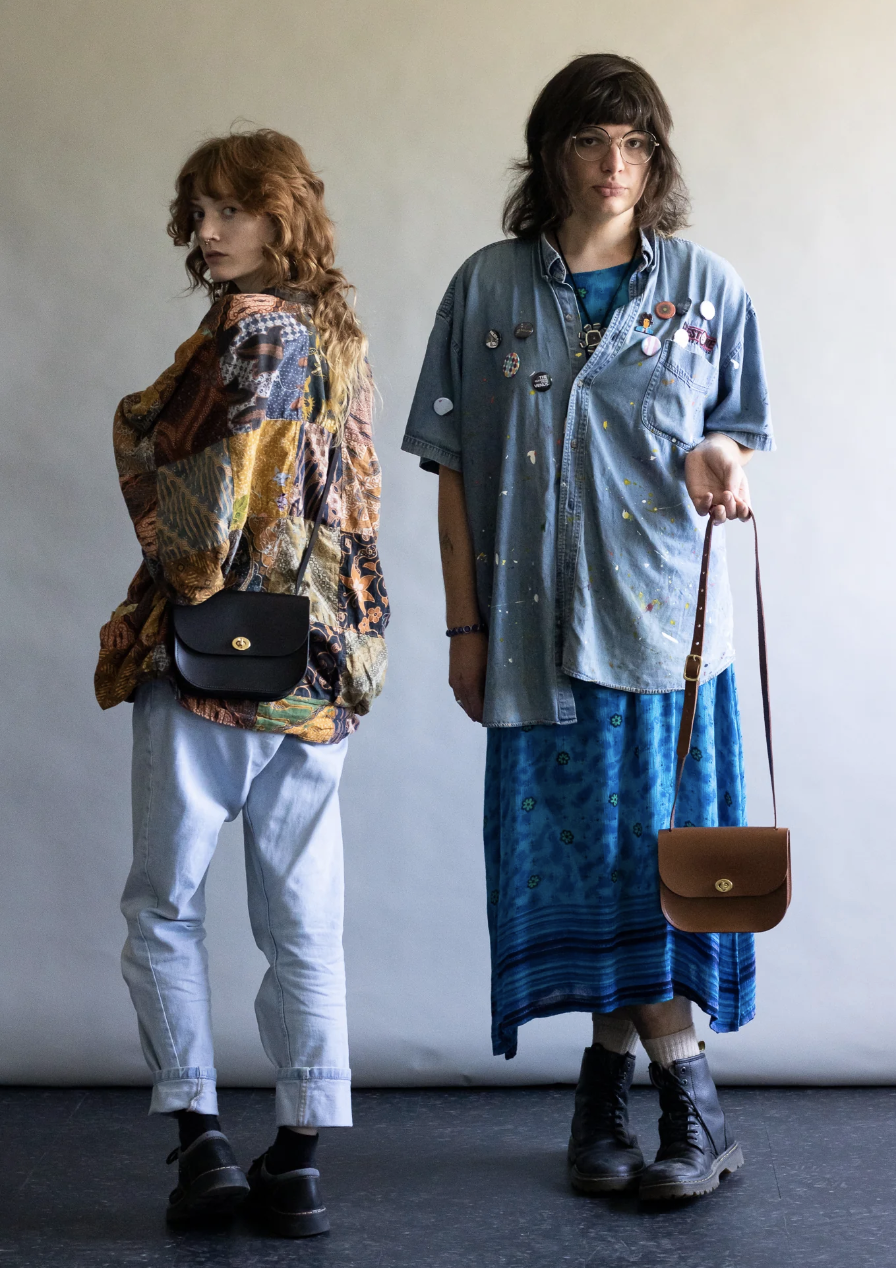
Christian Resiak, founder and owner of local leather manufacturer Howl + Hide, stresses the importance of intentionality and discernment when deciding to work with another brand. Resiak says this was particularly vital in the early stages of beginning his company, when they had to ensure partnerships would elevate their brand.
This discernment in choosing partnerships was implemented with the intention of leaving the brand open to opportunity and not closing itself off from potentially interested audiences. With the goal of propelling his brand to a national level, Resiak made the choice to label his products “Made in the USA” instead of “Made in Indiana” to encourage brand and consumer interest.
“I didn’t want to put a border around the brand,” Resiak says. “I wanted [there] to be endless opportunities from the very beginning. Now, with that being said, ninety percent of our bags are named after different Indianapolis streets. That gives us our homage to being from here and whatnot. But what we really want to do within collaborations is to do major national collaborations to bring light [to the fact they] can be done here.”
It worked—their first brand collaboration was creating goods for the John Wayne family. Since then, Howl + Hide has worked with the Detroit Pistons, Wilson, and Willie Nelson to create custom leather goods. Embarking on projects with such large brands has set the bar high for Resiak, who aims to work with companies whose audiences are bigger than his own.
Though, local-level collaborations have proven worthwhile for Resiak as well. Howl + Hide has collaborated with Tinker Coffee and the Benjamin Harrison presidential site, as well as a large clientele for which they create restaurant menus. Seeing their products in restaurants and worn by people across Indianapolis has been satisfying and doubles as free advertising.
“The partnerships that we’ve [done]—it’s just been super cool to see,” Resiak says. “And then, you see it all over the place. Now people are actually paying attention to that.”
In terms of expanding brand awareness, Resiak says the collaborations have been huge, but he’s not afraid to bail when necessary. Whenever visions fail to align, project deadlines become unfeasible, or a collaboration becomes too expensive to explore, the brand knows it’s time to move on to the next one.
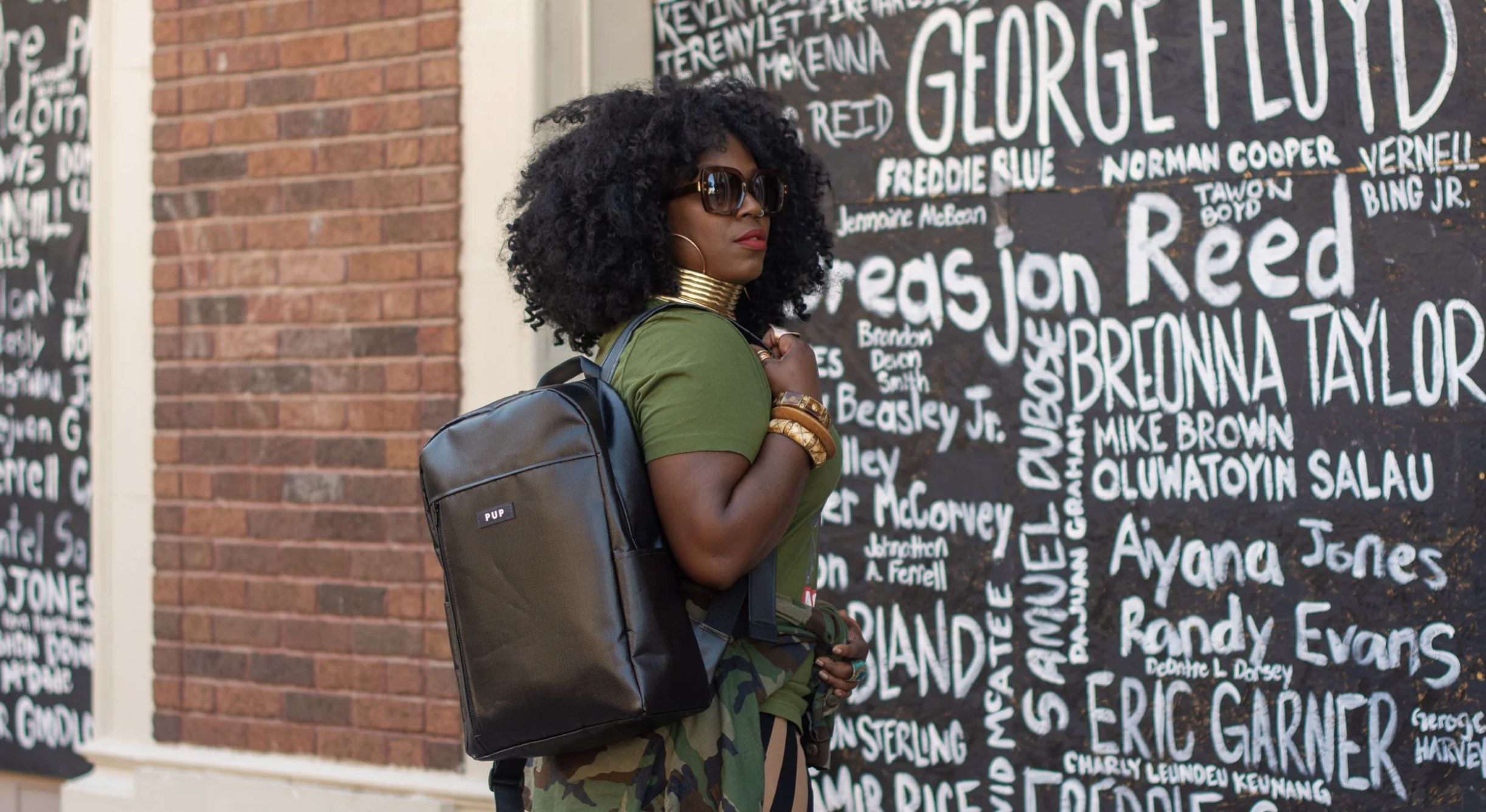
In the nonprofit world, collaboration tends to look a little bit different. This rings true for People For Urban Progress (PUP), a 501c3 devoted to civic sustainability through reusing materials across the Midwest. The brand has created bags and wallets from the roof of the Hoosier Dome, Amtrak seats, and pit crew fire suits that otherwise would have wound up in landfills.
Jennifer Agramonte, the business development manager for People For Urban Progress, says that PUP was essentially founded on the concept of collaboration. It takes two forms for the company: either partnering with a local business to acquire and reuse their scrap material, or collaborating with the community to promote workforce development by forming teams of people who are paid to clean and cut the material.
Similar to Howl + Hide, discernment becomes necessary for PUP when deciding what other organizations to collaborate with. Simply taking all of the scrap material they are offered would be too much for the organization to handle, so PUP only acquires material from companies they know they have the capacity to partner with. To do so, PUP engages in corporate gifting, which Agramonte says is essentially doing business collaboratively.
“We have a corporate gift guide,” Agramonte says. “[When someone makes an inquiry, we go out and talk to them about what we do. We find out what they’ve got, and from there, the project can look a million different ways.”
When collaborations with material providers are complete and materials have been refashioned into an assortment of accessories, PUP is tasked with taking their product to market. Being a nonprofit with no budget for marketing, one may think sales would pose a challenge—but that’s when community collaboration comes in. Though PUP products can be found at a variety of Indianapolis retailers, it’s word-of-mouth marketing that really drives their sales.
“It’s all about referrals for us,” Agramonte says. “People carry our products around and they love it. They are automatically ambassadors for us. It’s really interesting. It’s a very different way of marketing that product in a nonprofit world than it is in a for-profit world.”
According to Agramonte, referrals are the most effective form of marketing regardless of a businesses’ for-profit or nonprofit status. “As soon as people started buying the product and having it out, people will instantly ask ‘Where’d you get that?’ That creates the funnel [of] them going to the website and sharing the information. So we wouldn’t have any kind of sales, we wouldn’t have retailers coming to us, [without people referring us],” Agramonte says.
Agramonte stresses the importance of community-building and collaboration for local-level brands, especially cross-collaboration across industries. Though PUP exists in Indianapolis’ creative space, most of the companies they source materials from do not. She encourages brands to try using the power of referral in new spaces to grow their audiences.
“The creative economy in Indianapolis is something that sometimes lives within itself, and the only way that it’s going to grow and become a part of economic development here is to branch out,” Agramonte says. “We all are woven together. And we need to be putting those creative pieces into the non-creative space.”

